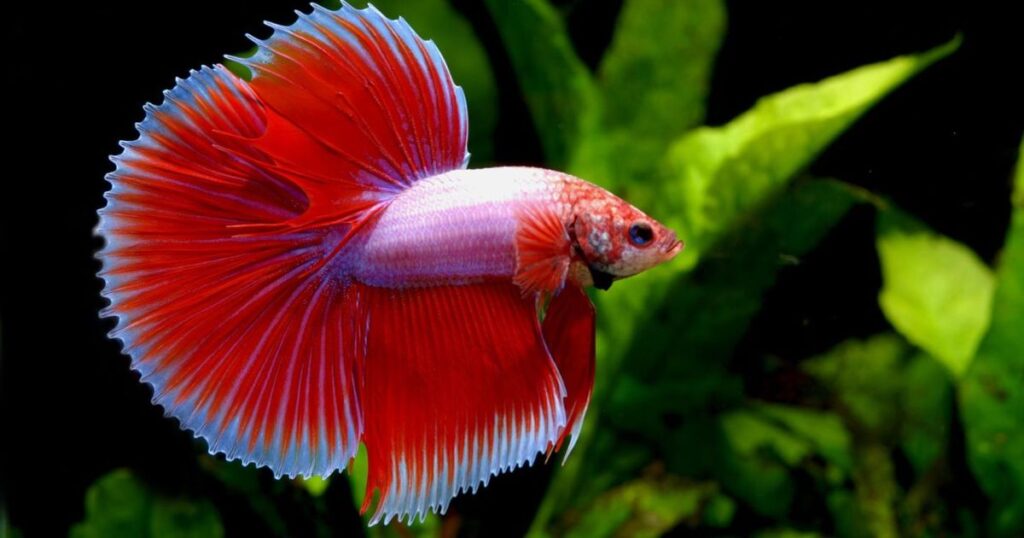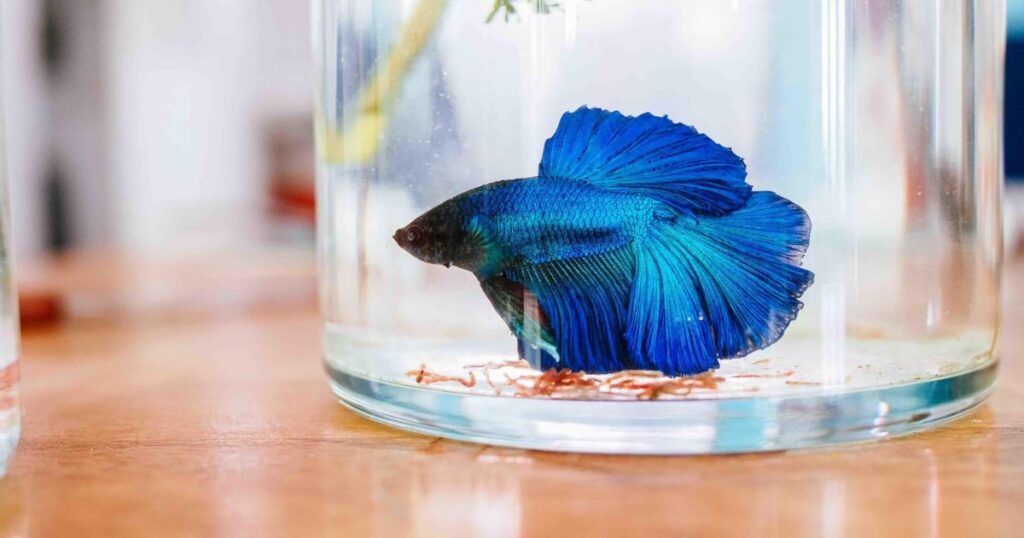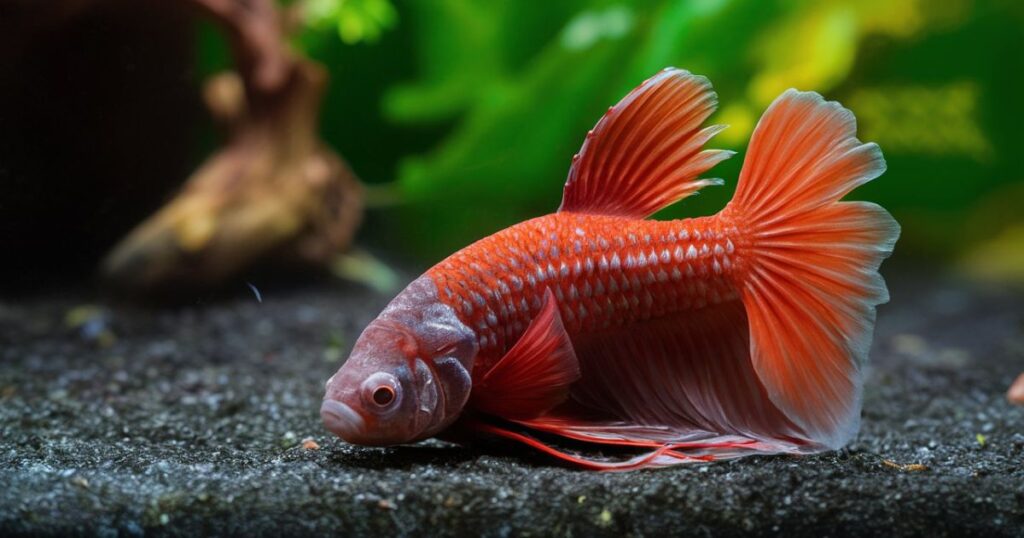Imagine this scenario: You’ve just returned home after a long day, eager to catch a glimpse of your vibrant siamese fighting fish swimming gracefully in its aquarium.
But to your dismay, you find your beloved betta splendens resting motionlessly on the substrate or gravel, causing you to worry about its well-being. While it’s not uncommon for bettas to occasionally lie down or rest on the aquarium bottom, prolonged periods of this behavior can indicate an underlying issue that requires your attention.
In this comprehensive guide, we’ll explore seven common reasons why your fighter fish might be laying on the bottom of the tank and provide practical solutions to help you ensure your pet’s health and happiness.
Overview
Betta fish, also known as siamese fighting fish or labyrinth fish, are a popular choice among aquarium enthusiasts worldwide. These striking creatures, renowned for their vibrant colors and flowing fins, can make captivating and low-maintenance pets. Like any living being, they may occasionally exhibit unusual behavior that raises concerns.
While it’s perfectly normal for bettas to spend short periods resting on the aquarium bottom, prolonged periods of this posture can be a sign of an underlying issue that requires your attention. In this article, we’ll delve into seven potential reasons why your betta splendens might be laying on the bottom of the tank and provide practical solutions to address each one.
Betta Fish Illness

One of the most common reasons for a betta fish to lay on the bottom of the tank is illness. If you notice your fighter fish exhibiting lethargy, loss of appetite, or abnormal swimming behavior in addition to the bottom-dwelling, it’s possible that it has contracted an infection or parasite.
Some common illnesses in bettas include:
- Fin rot: A bacterial infection that causes the fins to deteriorate and develop a ragged appearance.
- Ich: A parasitic disease characterized by white spots on the fish’s body.
- Columnaris: A bacterial infection that can cause gray or white lesions on the body and fins.
If you suspect your betta is ill, prompt action is crucial. Here’s what you can do:
Solution: Quarantine the sick betta in a separate tank or container to prevent the spread of disease to other tank mates. Consult with a veterinarian or an experienced fish hobbyist to accurately identify the specific ailment.
Follow their recommended treatments, which may include medications, water treatments, or adjustments to water parameters. An ounce of prevention is worth a pound of cure. – Benjamin Franklin
Maintaining optimal water conditions and providing a stress-free environment can go a long way in preventing illnesses in your betta fish.
Overheating
Bettas are tropical fish, and as such, they thrive in specific water temperature ranges. If the water in their tank is too warm, it can cause them to become sluggish and seek refuge on the bottom to cool down.
The ideal water temperature range for betta fish is typically between 76-82°F (24-28°C). Temperatures outside of this range can lead to stress, lethargy, and potential health issues.
Solution: Invest in a reliable aquarium heater and use a high-quality thermometer to monitor and maintain a consistent water temperature within the recommended range. Additionally, avoid placing the tank in direct sunlight or near drafts, as these factors can cause temperature fluctuations.
Water Quality

Poor water quality is one of the most common causes for a Betta fish lying at the bottom of the tank. High levels of ammonia or nitrate can lead to ammonia or nitrate poisoning, respectively. Hot temperatures can also stress out your fish, causing it to seek the cooler bottom of the tank.
Maintaining optimal water conditions is essential for the well-being of your betta. Here are the key parameters to monitor:
- Ammonia: Should be at 0 ppm (parts per million)
- Nitrites: Should be at 0 ppm
- Nitrates: Should be kept below 20 ppm
Solution: Regularly test the water conditions in your betta’s tank using a reliable test kit. Perform partial water changes (typically 25-30% of the tank volume) on a weekly basis to remove accumulated waste and maintain a healthy environment.
Proper filtration and cycling your tank can also help establish a balanced biological system that effectively breaks down waste products, ensuring optimal water conditions for your betta.
Fatigue
Bettas are active fish that require ample space to swim and explore. If their tank is too small or lacks adequate hiding places and enrichment, they may become fatigued from constant swimming and seek refuge on the bottom to rest.
These fish are known for their vibrant personalities and enjoy interacting with their surroundings. Providing them with a stimulating environment can prevent boredom and exhaustion.
Solution: Ensure that your betta’s tank is appropriately sized, with a minimum recommended volume of 5 gallons for a single fish. Incorporate various decorations, such as live or silk plants, caves, and other hiding spots, to create a dynamic and engaging environment.
Sonsider adding tank mates that are compatible with bettas, such as certain species of tetras or corydoras catfish. Be mindful of potential aggression and provide ample territories for each fish.
Betta Fish Old Age

As betta fish age, it’s natural for them to become less active and spend more time resting on the bottom of the tank. This behavior is often a part of the normal aging process and is not necessarily a cause for concern.
The average lifespan of a betta in captivity is between 2 and 5 years, although some may live longer with proper care. As they approach the end of their lifespan, you may notice your senior betta exhibiting increased lethargy, reduced appetite, and prolonged periods of inactivity.
Solution: While you can’t reverse the effects of aging, you can continue to provide excellent care by maintaining optimal water conditions, offering a nutritious diet, and ensuring their environment is suitable for their changing needs.
Be patient and understanding with your aging betta, and cherish the time you have left together. Remember, a well-cared-for betta can have a fulfilling and enriching life, even in its later years.
Read More : Which Birds Lay Blue Eggs?
Overcrowding
Bettas are known for their territorial nature and can become aggressive towards other fish, especially other male bettas. Overcrowding the tank with too many fish or incompatible tank mates can lead to stress and submissive behaviors, such as staying at the bottom of the tank.
It’s crucial to provide your betta with an appropriate living space and carefully select compatible tank mates to prevent aggression and ensure their well-being.
Solution: First, ensure that your betta’s tank is appropriately sized for the number of fish you plan to keep. A general guideline is a minimum of 5 gallons for a single betta, with additional space required for other fish.
Next, research compatible tank mates that can coexist peacefully with bettas. Some suitable options include certain species of tetras, corydoras catfish, or snails. Avoid keeping multiple male bettas together, as they will likely fight and become stressed.
Provide plenty of hiding spots, plants, and territories within the tank to allow each fish to establish its own space and reduce conflict.
Food Diet
A balanced and nutritious diet is essential for the overall health and vitality of your betta fish. If you’re not providing the right nutrition or overfeeding, it can lead to digestive issues or constipation, causing your betta to lay at the bottom in discomfort.
A proper betta diet should consist of high-quality pellets or flakes formulated specifically for siamese fighting fish. These should be supplemented with occasional treats such as frozen or live foods like brine shrimp, daphnia, or bloodworms.
Solution: Offer your betta a well-balanced diet consisting of high-quality betta pellets or flakes as the staple food. Supplement this with occasional treats like frozen or live foods, such as bloodworms, to provide variety and additional nutrients.
Be mindful of portion sizes and avoid overfeeding, as this can lead to digestive issues and water quality problems. Consider incorporating high-fiber foods like daphnia to aid in digestion and prevent constipation.
Where to Buy a Healthy Betta Fish

If you’re in the market for a new betta fish, it’s essential to source your pet from a reputable breeder or supplier that prioritizes the health and well-being of their stock.
One brand that stands out in the tropical fish community is Tropicflow. This reliable supplier offers an extensive selection of betta splendens, including stunning varieties such as halfmoon, plakat, and female bettas.
By choosing a healthy betta from a trusted source like Tropicflow, you’ll be starting off on the right foot. This reduces the risk of potential health issues and ensures your new pet has the best chance at a long and vibrant life.
Conclusion
Witnessing your beloved betta fish laying on the bottom of the tank can be a concerning sight. But understanding the potential reasons behind this behavior is the first step toward addressing the issue.
Whether it’s an illness, suboptimal water conditions, lack of enrichment, or improper nutrition, each of the seven reasons we’ve explored has practical solutions that can help restore your betta’s health and vitality.
Remember, prevention is key. By providing a suitable environment, a balanced diet, and regular maintenance, you can minimize the risk of your betta experiencing these issues in the first place.







